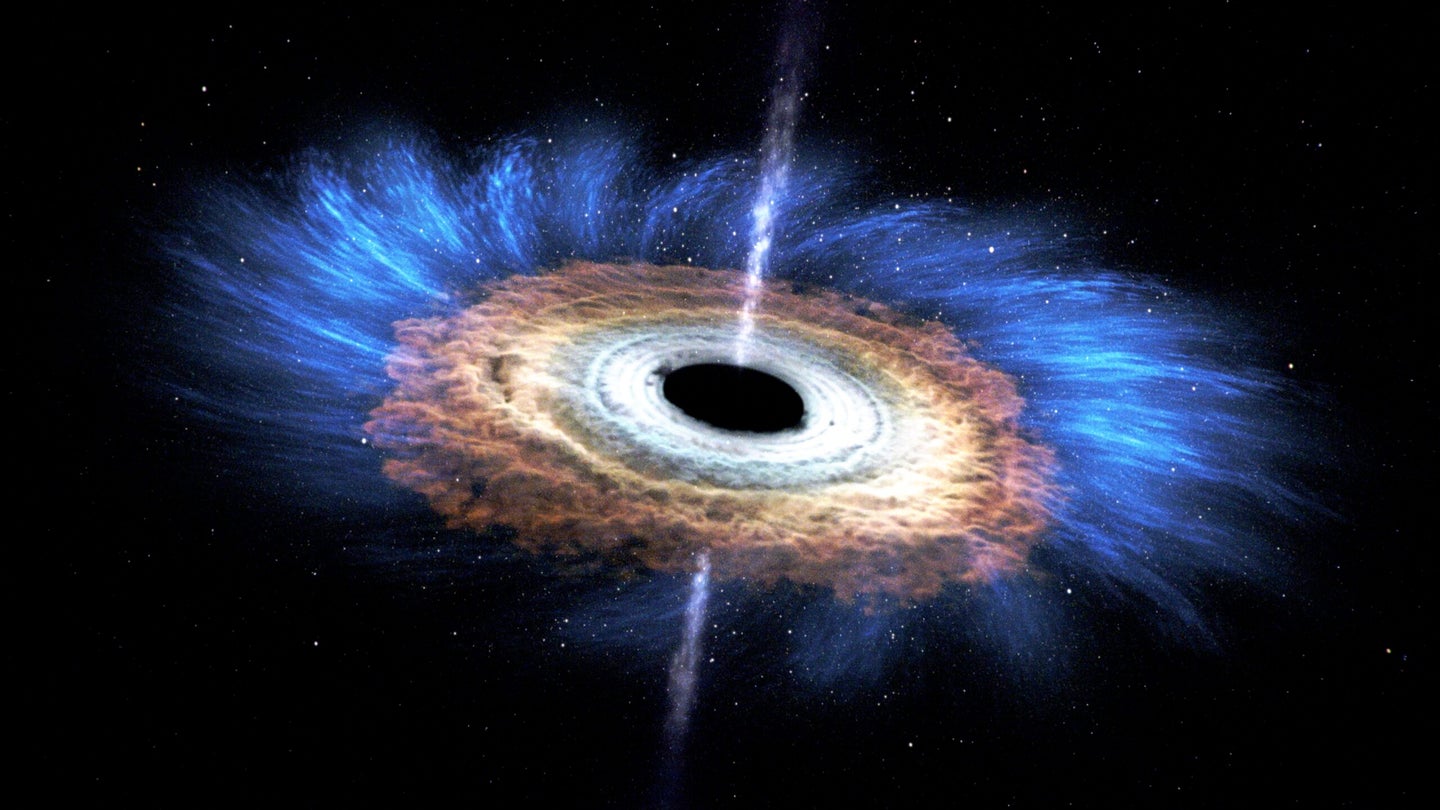Supermassive black holes sometimes go on feeding frenzies—here’s how they know it’s time for dinner
They’re called “supermassive” for a reason.

At the center of most galaxies lies a supermassive black hole, more than millions or even billions times more massive than the sun. But exactly what makes these black holes supermassive remains an enormous mystery. These gargantuan cosmic monsters don’t just appear out of nowhere—it takes a bit of time to put on all that weight. But they aren’t just constant feeding machines, either: like hibernating animals, they move back and forth between dormancy and activity, without any clear reason why.
A study recently published in Nature Astronomy shows the trigger for their mealtimes is probably even more complicated than we thought. An international research team has just observed a supermassive black hole entering a state of long-term growth in a manner that was entirely unexpected, both providing insight into how black holes can grow to large massive proportions, as well as underscoring just how little we understand what goes on at the center of galaxies throughout the universe.
About 10 percent of all supermassive black holes we can observe seem to be, at any given time, actively accreting matter—feeding on cosmic gas from their surroundings. “These accretion episodes should last for tens-of-thousands to tens-of-millions years,” says Benny Trakhtenbrot, an astronomer at Tel Aviv University and the lead author of the new study. Previous models have assumed that for supermassive black holes to switch on into a feeding frenzy for such a long period of time, the host galaxy would have to pass on some cold gas into its center where the black hole is located, which initiates the formation of stable flow of accretion.
Often times, however, feeding periods are transient scenarios. In recent years, there’s been an intense focus on “tidal disruption events,” in which unwitting stars that pass too close are torn apart and swallowed. “In such a ‘tidal disruption event’, the material stripped from the star might form a transient accretion flow,” says Trakhtenbrot. Accretion would ramp up fast, but also end as soon as the stellar gas was completely consumed or dissipated.
“What we saw,” says Trakhtenbrot, “was different from these two scenarios,” possessing the characteristics of a star-swallowing snacktime while clearly being a ravenous feast.
The new findings center around something called the AT 2017bgt event, a strange phenomenon observed in February 2017 by the All Sky Automated Survey for Supernovae, whose telescopes are based around the world. Astronomers initially believed the event, which took place in a pair of overlapping galaxies nearly 800 million light years away, was a tidal disruption, since it emitted an intense amount of radiation that brightened the area by more than 50 times what it was in 2004.
But Trakhtenbrot and his colleagues quickly realized there was something else at play. The intensified accretion was enduring for more than two years and counting, even though tidal disruption events end much sooner. A year-long period of observations using more than 30 other ground- and space-based telescopes showed AT 2017bgt was emitting an additional component of high-velocity UV radiation, a so-called “Bowen fluorescence” feature that has never before been observed in association with supermassive black hole accretion.
In they end, the findings were equal parts compelling and murky. AT 2017bgt was a black hole that entered a state of long-term accretion, but through a process reminiscent of a tidal disruption event, even though there were no signs that a star was ripped up and turned into dinner. It’s an entirely new way for supermassive black holes to get ready for a long feast.
Moreover, the researchers suspect this process is “perhaps not as uncommon as one would think,” says Trakhtenbrot. “We found a couple more sources that present the same behavior. There might have been more events like that, which were overlooked and/or misclassified.”
None of these findings are conclusive. Three similar events is a small sample size, and this picture of black hole accretion is still very preliminary. Trakhtenbrot emphasizes the need for a long line of follow-up research that can verify more robustly that other supermassive black holes exhibit this behavior, and develop a longer timeline for how this process begins and ends.
Still, Trakhtenbrot thinks that if everything stands up to scrutiny, this new model could explain the origin of supermassive black holes within the first billion years after the big bang. “We’re not there yet,” he says, “but every event—and indeed the more mysterious ones—brings us one step closer to these broader goals.” That will be useful to know if the supermassive black hole sitting at the center of the Milky Way ever decides to wake up and start another million-years-long feeding cycle.